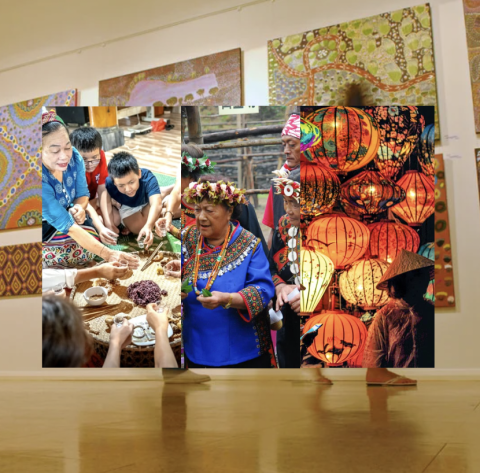
In today’s world, intercultural families are increasingly common. Whether through marriage, adoption, or partnership, many families are made up of people from different cultural, ethnic, or religious backgrounds. This blending of traditions, values, and life experiences can create a home filled with richness, diversity, and deep meaning. At the same time, it can also present unique challenges that require patience, openness, and intentional communication.
For families navigating the process of blending cultures, mental health support can play a vital role in helping members honor their identities, build bridges, and thrive together.
Blending cultures within a family means bringing together multiple histories, perspectives, and traditions. Children in intercultural households often gain a broader worldview, learning early that there is more than one way to live, celebrate, and make meaning of life’s milestones.
-
Celebrations become richer. Holidays can merge, evolve, or multiply, creating opportunities for everyone to learn and participate. For example, a family might celebrate both Lunar New Year and Thanksgiving, or blend Diwali traditions with Christmas.
-
Multiple languages may be spoken. This can foster adaptability and resilience in children, along with the ability to connect to extended family members across countries.
-
Values are shared across contexts. A child may learn the importance of collectivism from one parent’s culture and individual expression from another’s, giving them a balanced foundation.
These experiences can help family members develop empathy, flexibility, and cultural awareness—skills that serve them throughout their lives.
Common Challenges
Despite the beauty, it’s also natural for challenges to emerge. Intercultural families may encounter tensions around traditions, expectations, and values. Some common struggles include:
-
Different Parenting Styles.
Parenting approaches often reflect cultural backgrounds. For example, one parent may prioritize discipline and respect for authority, while the other emphasizes independence and self-expression. These differences can lead to conflict if not discussed openly. -
Religious or Spiritual Beliefs.
Families may face questions such as: How will children be raised in faith? Which holidays will be prioritized? What rituals will be passed down? These decisions can feel weighty, especially when extended families have strong opinions. -
Language Barriers.
When one parent speaks a different first language, communication may be challenging within the couple, with in-laws, or between generations. Children may also feel pulled between languages, sometimes rejecting one to fit in socially. -
Identity Development in Children.
Children in intercultural families may struggle to find where they “fit.” They might experience pressure to choose one culture over another, or face discrimination from peers who do not understand their blended background. -
Extended Family Expectations.
In-laws and relatives may hold strong beliefs about how a family “should” operate, putting pressure on the couple or creating tension between cultures.
While these challenges are real, they are not insurmountable. With openness, flexibility, and the right support, intercultural families can thrive.
Helpful Strategies
Blending cultures requires intentionality and respect. Here are some evidence-informed strategies families can use to strengthen connection:
1. Create a Culture of Curiosity
Instead of seeing differences as obstacles, approach them with curiosity. Ask one another:
-
What does this tradition mean to you?
-
What value is being expressed through this practice?
-
How can we honor both of our backgrounds in a way that feels authentic?
When family members feel heard and respected, differences become opportunities for learning rather than sources of division.
2. Develop Shared Family Rituals
Rather than choosing one tradition over another, families can create new rituals that blend elements of both. For example, a couple might combine foods from each culture during holiday meals or develop bedtime routines that incorporate songs, stories, or prayers from both traditions. These rituals can become a unique cultural fingerprint for the family.
3. Practice Open Communication
Healthy communication is essential in any family, but especially in intercultural households. Parents can model this by discussing their cultural expectations with one another before conflicts arise. For children, it’s helpful to create safe spaces where they can express their feelings about identity, belonging, and external pressures.
4. Address Identity Development Early
Children in intercultural families benefit when parents proactively affirm all aspects of their identity. This may involve teaching them about their heritage, exposing them to role models from similar backgrounds, and equipping them to respond to stereotypes or bias. Encouraging pride in their blended background can buffer against identity-related struggles.
5. Seek Support When Needed
Sometimes the complexities of blending cultures can feel overwhelming. Mental health professionals, family therapists, and community groups can provide guidance. Clinicians trained in intercultural competence can help families navigate conflicts, manage identity struggles, and develop strategies for inclusion and resilience.
Mental Health Considerations
Blended intercultural families may face stressors such as discrimination, microaggressions, or cultural isolation. These stressors can affect mental health if not addressed. Signs to look out for include:
-
Withdrawal or isolation from family members.
-
Anxiety about fitting in or being “different.”
-
Depressive symptoms related to identity struggles.
-
Tension or unresolved conflict between parents around cultural expectations.
Supportive interventions can include:
-
Culturally sensitive family therapy that honors each member’s background.
-
Psychoeducation about cultural identity development for both parents and children.
-
Support groups where intercultural families connect with others facing similar dynamics.
Mental health care should never ask a family to choose one culture over another. Instead, it should empower families to weave together their differences into a strong and affirming whole.
Moving Forward Together
Blending intercultural families is not about erasing differences. It is about weaving them together in ways that honor each person’s identity and history. This process takes time, patience, and compassion, but the rewards are profound: children who feel whole, partners who feel respected, and families who embody the richness of diversity.
Mental health professionals, educators, and community leaders can support this process by promoting cultural sensitivity, validating diverse experiences, and helping families see the strengths in their blended identities.
At the heart of it all is love—a universal language that transcends borders, traditions, and histories. When families commit to listening, learning, and growing together, intercultural homes can become some of the most resilient and vibrant families in our communities.
